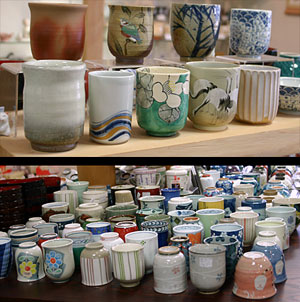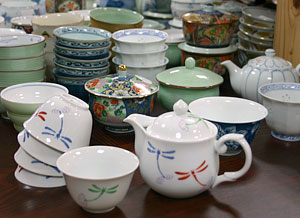Having selected your ideal teapot, you may well be thinking of acquiring some matching teacups. This is not as straightforward as it sounds!
In Japan, the western ideal of a “tea set” — a perfectly matching set of teacups and teapot in the same design — is not absolute. Some sets do exist, although many people like to enjoy various textures and designs by mixing and matching pieces from different kilns. Tokoname, for example, specializes in teapots and produces a fairly small amount of teacups. It is therefore quite common to see Tokoname teapots paired with Arita-yaki, Hagi-yaki, Kutani-yaki, or other teacups.





